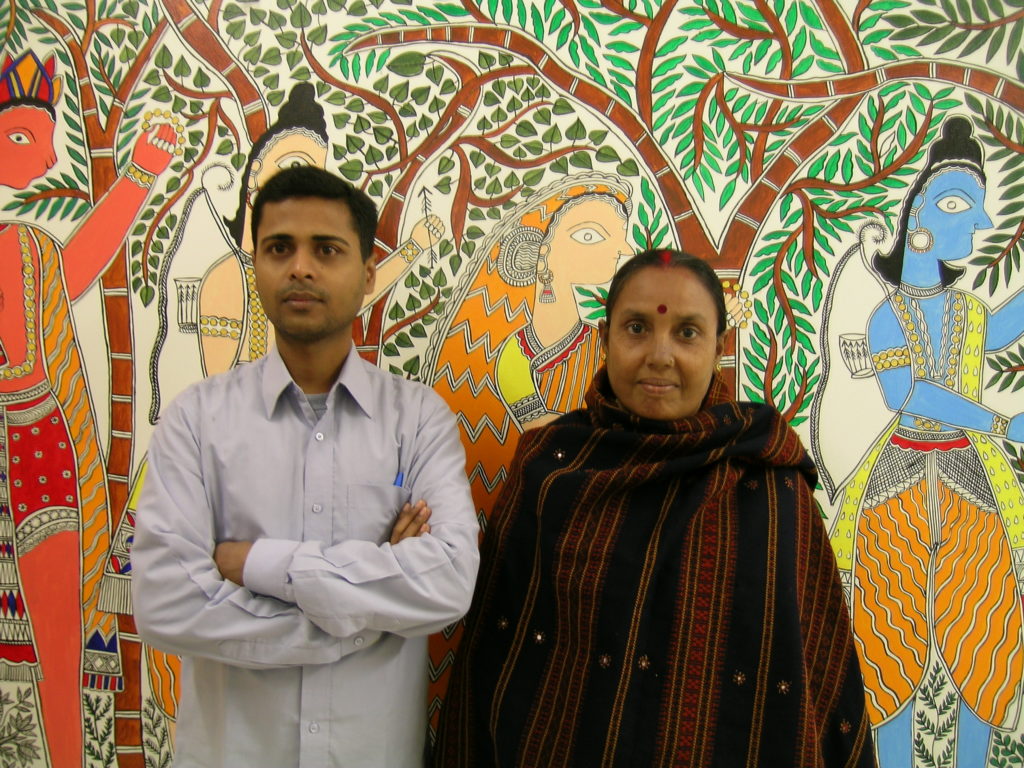For Wellington’s Diwali Festival, the Festival of Lights, Indian artist Shanti Devi has creates a Madhubani painting in situ.
Madhubani painting comes from the Madhubani (meaning ‘Forest of Honey’) district, in the northern Indian state of Bihar. It’s traditionally practiced by Hindu women, who paint the walls and floors of their houses before major festivals or family celebrations. Madhubani paintings are brightly colours with detailed patterns. They often tell stories of Hindu deities, filled out with brightly-coloured trees, flowers, birds, and abstract patterns. The paintings perform religious and social functions for their communities.
Madhubani painting has changed. Following a drought in the early 1960s, the Indian government supplied paper to paint on, triggering a shift from producing fixed, domestic, ritualistic paintings to portable, sellable ones. It also gave Madhubani painters have a greater ability to see each other’s work, triggering experimentation and exchange.
Devi’s painting represents Rama's return to his kingdom of Ayodhya, after fourteen years exile. Having destroyed Ravana, King of the Demons, Rama returns with his wife Sita to be crowned King of Ayodhya. His victorious return is celebrated in the Diwali festival. Devi and her assistant, Mr Karn, work on the painting in situ over one week (15–23 October). Devi sketches out the design while he fills in blocks of colour. The public are welcome to watch painting progress and to ask questions.











